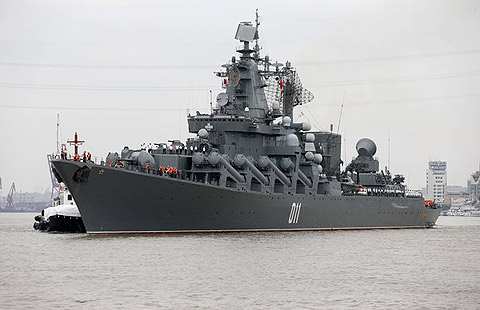US seeks nonexistent threat
By Song Zhongping ( China Daily ) Updated: 2014-01-18 08:38:11The US media and some of its officials have raised a hue and cry about the recent hypersonic missile delivery vehicle test by China with the obvious intention of exaggerating "China's military threat".
According to the Washington Free Beacon, which first reported the test on Monday, China's hypersonic glide vehicle appears designed to be launched atop an intercontinental ballistic missile, and then glide and maneuver at 10 times of the speed of sound from near space en route to its target. It quoted a Pentagon official as saying that the test was conducted with the aim of sending warheads through the US missile defense system.
The advantages of hypersonic craft include precision targeting, very rapid delivery of weapons and greater survivability against missile and space defense systems.
Some US Congressmen, referring to the test, have said that the Chinese "appear to be leaping ahead of us" in terms of developing technologies. In a joint statement, Republican House Armed Services Committee members Howard P. "Buck" McKeon, Randy Forbes and Mike Rogers said they were worried whether the US can maintain its technological advantage given the level of budget cuts that Congress has approved. These wordings, along with the lurid remarks on the land-based and submarine-launched intercontinental ballistic missile test by China in late December, show that the US will not let go of any chance to spread the "China threat" theory.
By continuously misinterpreting the gravity of China's weapons and spacecraft tests, the US hopes to instill a more pressing sense of crisis among its allies. The US already regards China as a core strategic rival of its "rebalancing" strategy in the Asia-Pacific region, so the uproar over "China threat", especially "China's military threat", is expected to compel Congress to increase the defense budget for advanced weapons' research and development to allow the Pentagon to maintain its advantage.
Also, without an imaginary powerful enemy, US weapons' manufacturers will find it difficult to increase their sales and raise their profits. And they, along with some US politicians, see a cut in the military budget as detrimental to their interests.
The US is likely to use exaggerated military might of China also to rally its allies in the Asia-Pacific to jointly counter China's growing regional and international influence. It intends to sell more weapons to its allies, too, by portraying China as a great threat to their security. Some White House officials even believe that an arms race between its Asian allies and China or a limited military conflict between them will be of immense benefit to Washington. After all, checking China's rise is what the US has been wishing for. And it will be ideal for it if that happens without a direct confrontation with China.
Irrespective of its sensitivity to China's normal military developments, the Pentagon has been developing its own hypersonic vehicles for years. For example, the US Air Force worked with the Defense Advanced Research Projects Agency on the $300-million X-51 hypersonic program, which began in 2004 and concluded in May 2013 with the test flight of the fourth and final robotic Waverider scramjet vehicle. The test was declared as the "longest air breathing hypersonic flight ever". DARPA has also been developing an unmanned bomber prototype called HTV-2, which blazed at 20 times the speed of sound during an August 2011 test flight before losing control.
Aside from trying to sharpen its rapid-strike forces, the US is also building an all-directional missile interception network in China's surrounding regions. Besides deploying the ground-based mid-course defense system in Alaska and California, the US has deployed Standard Missile 3, a key part of its sea-based mid-course defense system, in Asia-Pacific waters. These defense systems, together with the advanced missile interception and early-warning radar systems deployed in Japan and other Asia-Pacific regions, have built for the US a hard anti-missile bulwark against China and Russia. But if China, even under such circumstances, makes any effort to upgrade its long-distance precision striking force such as long-distance and intercontinental missiles, the US will overreact and raise an anti-China storm.
China lags far behind the US when it comes to comprehensive national force and military capability. But it has no intention of starting an arms race with any country. Nevertheless, it is normal for China to conduct defense experiments within its borders, as the Ministry of National Defense has said.
The hypersonic vehicle is not a patent owned by the US. Other countries are also engaged in hypersonic research and weapons' development. And to safeguard its sovereignty and improve its defense capability, China is entitled to upgrade its weaponry, including hypersonic boosters.
The author is a commentator on military affairs. The article first appeared in the International Herald Leader.
|
|
|
|
|
|
|
|

















 Op Rana
Op Rana Berlin Fang
Berlin Fang Zhu Yuan
Zhu Yuan Huang Xiangyang
Huang Xiangyang Chen Weihua
Chen Weihua Liu Shinan
Liu Shinan